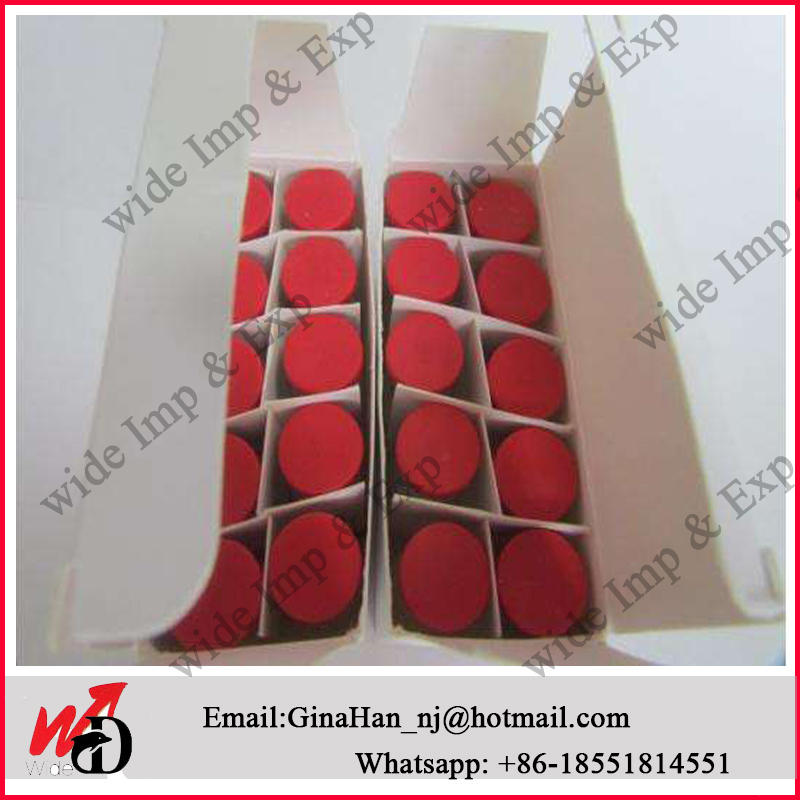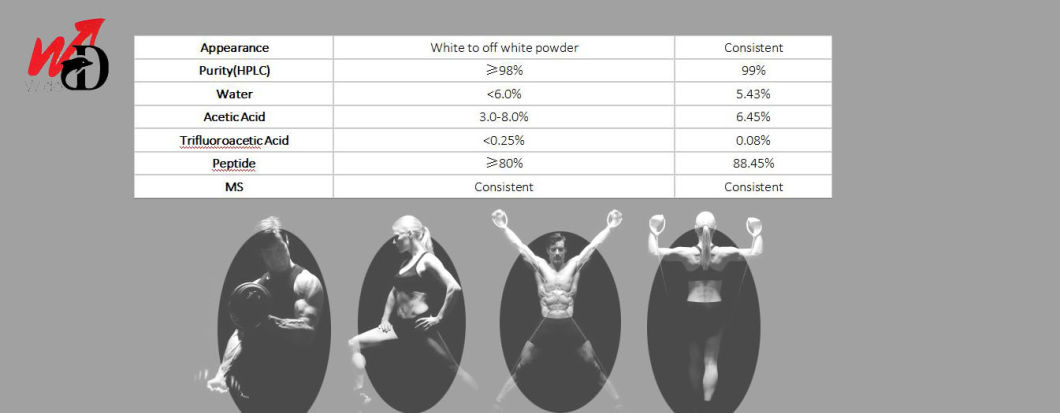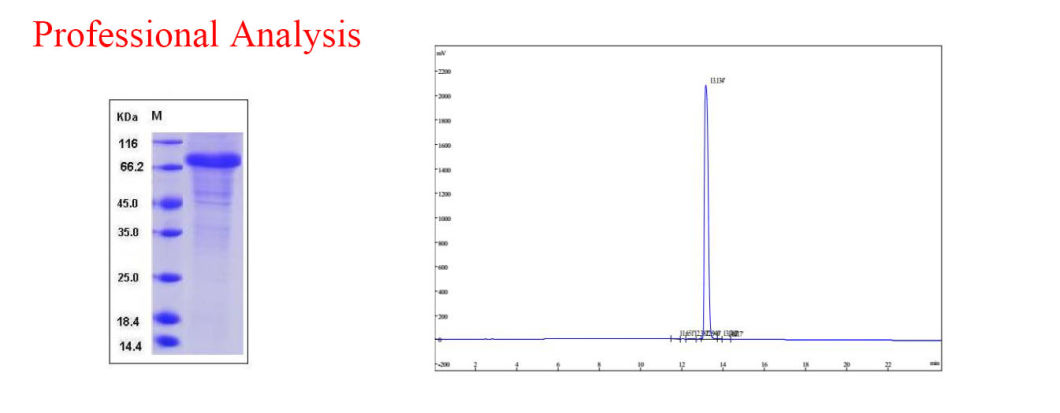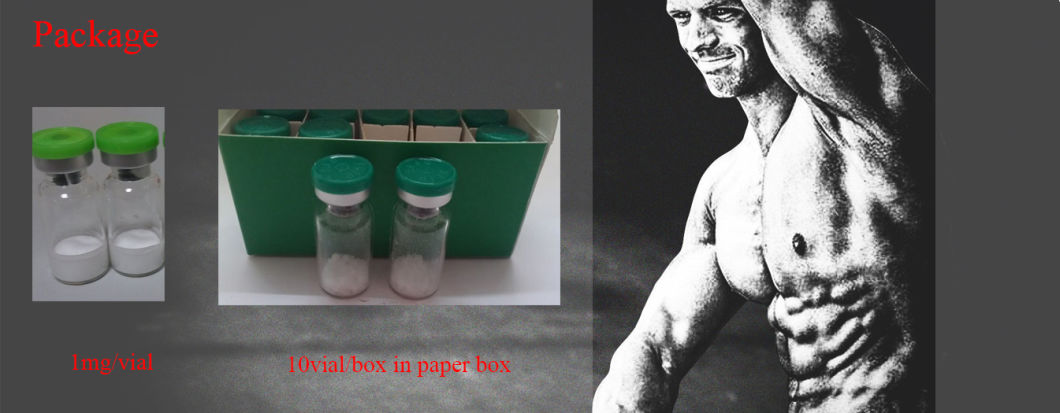Â
Model: WSPEPHS07

Follistatin is a single-chain gonadal protein that specifically inhibits follicle-stimulating hormone release.
Appearance: Sterile Filtered White lyophilized (freeze-dried) powder.
Purity: Greater than 95.0%
Formulation: Lyophilized from a concentrated (1mg/ml) solution containing no additives. Solubility: It is recommended to reconstitute the lyophilized Follistatin in sterile 18M -cm H2O not less than 100 G/ml, which can then be further diluted to other aqueous solutions. Stability: Lyophilized Follistatin although stable at room temperature for 3 weeks, should be stored desiccated below -18ºC. Upon reconstitution FST should be stored at 4ºC between 2-7 days and for future use below -18ºC. For long term storage it is recommended to add a carrier protein (0.1% HSA or BSA).
Â
COA:
| Appearance | White to off white powder | Consistent |
| Purity(HPLC) | ≥98% | 99% |
| Water | <6.0% | 5.43% |
| Acetic Acid | 3.0-8.0% | 6.45% |
| Trifluoroacetic Acid | <0.25% | 0.08% |
| Peptide | ≥80% | 88.45% |
| MS | Consistent | Consistent |
Follistatin (FST) is a secreted glycoprotein that was first identified as a follicle stimulating hormone inhibiting substance in ovarian follicular fluid (1, 2). Human Follistatin cDNA encodes a 344 amino acid (aa) protein with a 29 aa signal sequence, an Nterminal atypical TGF binding domain, three Follistatin domains that contain EGFlike and kazallike motifs, and a highly acidic Cterminal tail. Follistatin is a secreted protein that binds to ligands of the TGF-Beta family and regulates their activity by inhibiting their access to signaling receptors. It was originally discovered as activin antagonists whose activity suppresses expression and secretion of the pituitary hormone FSH (follicle stimulating hormone). In addition to being a natural antagonist, follistatin can inhibit the activity of other TGF-Beta ligands including BMP-2, -4, -6, -7, Myostatin, GDF-11, and TGF-Beta1. Follistatin is expressed in the pituitary, ovaries, decidual cells of the endometrium, and in some other tissues. Recombinant human Follistatin is a 37.8 kDa protein containing 344 Amino Acids .
Â



Follistatin and Muscle Growth:
Â
Follistatin works by binding to and inhibiting transforming - (TGF-) peptides such as myostatin which is responsible for regulating and limiting muscle growth.  It's also worth pointing out that myostatin may have a regulatory role in skeletal muscle fibrosis; too much myostatin can impair tissue function and cause chronic disease in vital organs, tissues, and bone marrow.Â
In additional to suppressing the degenerative properties of myostatin, follistatin also suppresses the pituitary gland synthesis and secretion of follicle-stimulating hormone (FSH). [1] High FSH levels in men may indicate that testicles are not functioning correctly; this condition limits muscle growth, recovery, and normal hormonal function.However, FSH levels that are too low can also negatively impact health and reproductive capabilities.
ACE-031 is intended for research purpose only. ACE-031 should not be used for human consumption, diagnostic, therapeutic procedures, agricultural and veterinary purposes.
ACE-031 is a soluble fusion protein that has been shown to increase muscle mass and strength in research studies. ACE-031 is being studied as a treatment for metabolic diseases, renal neoplasms of childhood, cardiovascular anomalies, age-related muscle loss, and cancer treatment related muscle loss and neuromuscular diseases. ACE-031 is a biologic therapeutic, based on activin receptor type IIB (ActRIIB). The molecule inhibits signaling via the ActRIIB receptor binding and increase muscle mass and strength. ACE-031 is a recombinant fusion protein that is artificially synthesized by fusion of standard antibody and a portion of ActRIIB receptor. The recombinant fusion protein eliminates myostatin and other biomolecules that limit muscle strength or growth.
Follistatin is fascinating protein that can increase muscle mass beyond natural potential by suppressing myostatin. Scientists first identified follistatin while examining porcine (re: pig) follicular fluid in the ovaries.Â
Follistatin is naturally found in the skeletal muscle of almost all mammals with advanced or developed characteristics, such as humans, rodents, and cows. Follistatin is high in the
non-essential amino acid cystine but unlike most proteins discussed in the fitness world, follistatin has carbohydrates attached to it.Â
Follistatin, specifically Follistatin 344 (FS344), quickly gained popularity in the bodybuilding community as a potential supplement to rapidly increase lean tissue mass. Another protein, follistatin-related gene (FLRG) acts on similar pathways as FS344 regarding its muscle building properties. Increased lean tissue mass could give a bodybuilder an advantage in a competitive setting and be the differentiating factor between first and second place.
Â
Follistatin (FS) was initially identified as a follicle-stimulating hormone inhibiting substance found in ovarian follicular fluid. FS is a high-affinity activin-binding protein that can act as an activin antagonist. Two alternatively spliced follistatin mRNAs exist, encoding mature FS with 288 amino acid (aa) residues (FS-288) and 315 aa residues (FS-315). Natural FS purified from porcine ovaries is primarily a carboxy-terminal truncated form of FS-315 composed of 300 aa residues.
Â
| Name | Function |
| Melanotan IIÂ | Timulate the body's tanning reponse |
| HG 176-191 | the fat-reducing effects |
| TB 500 | increase muscle growth |
| Oxytocin | used for stimulation of uterus contractions |
| sermorelin | increase the development of lean body mass |
| Hexarelin | the treatment of secretion deficiency |
| Ipamorelin | a selective  secretagogue |
| Melanotan I | endogenous melanocortine peptide |
| MGF | used by bodybuilders and athletes |
| PEG MGF | cause site specific muscle growth |
| CJC 1295 | increasing binding affinity to the ghrh receptors |
| CJC 1295 with DAC | improved physique and sense of well being |
| PT 141 | increase libido effects of both men and women |
| GHRP-2 | hormone stimulation |
| GHRP-6 | increase in strength, muscle mass, body fat loss |
Â
Model: WSPEPHS07

Follistatin is a single-chain gonadal protein that specifically inhibits follicle-stimulating hormone release.
Appearance: Sterile Filtered White lyophilized (freeze-dried) powder.
Purity: Greater than 95.0%
Formulation: Lyophilized from a concentrated (1mg/ml) solution containing no additives. Solubility: It is recommended to reconstitute the lyophilized Follistatin in sterile 18M -cm H2O not less than 100 G/ml, which can then be further diluted to other aqueous solutions. Stability: Lyophilized Follistatin although stable at room temperature for 3 weeks, should be stored desiccated below -18ºC. Upon reconstitution FST should be stored at 4ºC between 2-7 days and for future use below -18ºC. For long term storage it is recommended to add a carrier protein (0.1% HSA or BSA).
Â
COA:
| Appearance | White to off white powder | Consistent |
| Purity(HPLC) | ≥98% | 99% |
| Water | <6.0% | 5.43% |
| Acetic Acid | 3.0-8.0% | 6.45% |
| Trifluoroacetic Acid | <0.25% | 0.08% |
| Peptide | ≥80% | 88.45% |
| MS | Consistent | Consistent |
Follistatin (FST) is a secreted glycoprotein that was first identified as a follicle stimulating hormone inhibiting substance in ovarian follicular fluid (1, 2). Human Follistatin cDNA encodes a 344 amino acid (aa) protein with a 29 aa signal sequence, an Nterminal atypical TGF binding domain, three Follistatin domains that contain EGFlike and kazallike motifs, and a highly acidic Cterminal tail. Follistatin is a secreted protein that binds to ligands of the TGF-Beta family and regulates their activity by inhibiting their access to signaling receptors. It was originally discovered as activin antagonists whose activity suppresses expression and secretion of the pituitary hormone FSH (follicle stimulating hormone). In addition to being a natural antagonist, follistatin can inhibit the activity of other TGF-Beta ligands including BMP-2, -4, -6, -7, Myostatin, GDF-11, and TGF-Beta1. Follistatin is expressed in the pituitary, ovaries, decidual cells of the endometrium, and in some other tissues. Recombinant human Follistatin is a 37.8 kDa protein containing 344 amino acids .
Â



Follistatin and Muscle Growth:
Â
Follistatin works by binding to and inhibiting transforming - (TGF-) peptides such as myostatin which is responsible for regulating and limiting muscle growth.  It's also worth pointing out that myostatin may have a regulatory role in skeletal muscle fibrosis; too much myostatin can impair tissue function and cause chronic disease in vital organs, tissues, and bone marrow.Â
In additional to suppressing the degenerative properties of myostatin, follistatin also suppresses the pituitary gland synthesis and secretion of follicle-stimulating hormone (FSH). [1] High FSH levels in men may indicate that testicles are not functioning correctly; this condition limits muscle growth, recovery, and normal hormonal function.However, FSH levels that are too low can also negatively impact health and reproductive capabilities.
ACE-031 is intended for research purpose only. ACE-031 should not be used for human consumption, diagnostic, therapeutic procedures, agricultural and veterinary purposes.
ACE-031 is a soluble fusion protein that has been shown to increase muscle mass and strength in research studies. ACE-031 is being studied as a treatment for metabolic diseases, renal neoplasms of childhood, cardiovascular anomalies, age-related muscle loss, and cancer treatment related muscle loss and neuromuscular diseases. ACE-031 is a biologic therapeutic, based on activin receptor type IIB (ActRIIB). The molecule inhibits signaling via the ActRIIB receptor binding and increase muscle mass and strength. ACE-031 is a recombinant fusion protein that is artificially synthesized by fusion of standard antibody and a portion of ActRIIB receptor. The recombinant fusion protein eliminates myostatin and other biomolecules that limit muscle strength or growth.
Follistatin is fascinating protein that can increase muscle mass beyond natural potential by suppressing myostatin. Scientists first identified follistatin while examining porcine (re: pig) follicular fluid in the ovaries.Â
Follistatin is naturally found in the skeletal muscle of almost all mammals with advanced or developed characteristics, such as humans, rodents, and cows. Follistatin is high in the
non-essential amino acid cystine but unlike most proteins discussed in the fitness world, follistatin has carbohydrates attached to it.Â
Follistatin, specifically Follistatin 344 (FS344), quickly gained popularity in the bodybuilding community as a potential supplement to rapidly increase lean tissue mass. Another protein, follistatin-related gene (FLRG) acts on similar pathways as FS344 regarding its muscle building properties. Increased lean tissue mass could give a bodybuilder an advantage in a competitive setting and be the differentiating factor between first and second place.
Â
Follistatin (FS) was initially identified as a follicle-stimulating hormone inhibiting substance found in ovarian follicular fluid. FS is a high-affinity activin-binding protein that can act as an activin antagonist. Two alternatively spliced follistatin mRNAs exist, encoding mature FS with 288 amino acid (aa) residues (FS-288) and 315 aa residues (FS-315). Natural FS purified from porcine ovaries is primarily a carboxy-terminal truncated form of FS-315 composed of 300 aa residues.
Â
| Name | Function |
| Melanotan IIÂ | Timulate the body's tanning reponse |
| HG 176-191 | the fat-reducing effects |
| TB 500 | increase muscle growth |
| Oxytocin | used for stimulation of uterus contractions |
| sermorelin | increase the development of lean body mass |
| Hexarelin | the treatment of secretion deficiency |
| Ipamorelin | a selective  secretagogue |
| Melanotan I | endogenous melanocortine peptide |
| MGF | used by bodybuilders and athletes |
| PEG MGF | cause site specific muscle growth |
| CJC 1295 | increasing binding affinity to the ghrh receptors |
| CJC 1295 with DAC | improved physique and sense of well being |
| PT 141 | increase libido effects of both men and women |
| GHRP-2 | hormone stimulation |
| GHRP-6 | increase in strength, muscle mass, body fat loss |
Natural sweeteners refer to food additives that can sweeten soft drinks. They can be divided into natural sweeteners and synthetic sweeteners according to their sources.
Natural sweeteners are substitutes for sugar. Natural sweeteners considered to be generally safe include stevia, licorice, disodium glycyrrhizinate, tripotassium glycyrrhizinate and trisodium. Natural sweeteners have many uses in the home and in processed foods.
Natural non-nutritive sweeteners are increasingly paid attention to, is the development trend of sweeteners, WHO pointed out that diabetes patients have reached more than 50 million, more than a quarter of the American people require low-calorie food. In sucrose substitutes, the United States mainly uses aspartame, up to more than 90%, Japan mainly uses stevia glycoside, and Europeans are more interested in AK sugar (acesulfames). All three non-nutritive sweeteners are available in China.
Natural Sweetener,Natural Sweetner Stevia Extract,Sucralose Sweetener,Non-Nutritive Strong Sweetener
Allied Extracts Solutions , https://www.alliedadditives.com